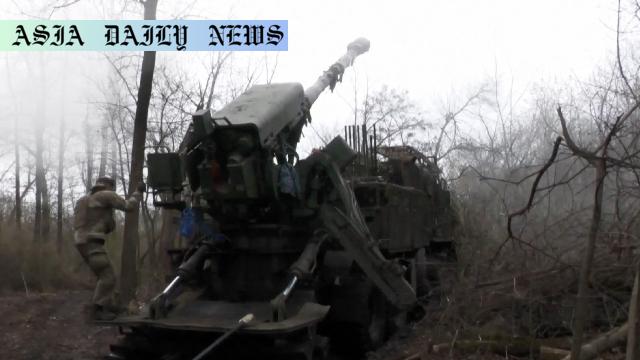Peace Plan: US and EU draft a controversial proposal leaving Russian-occupied Ukrainian territories under Moscow’s control.

Overview of the Controversial Peace Plan
The United States and European Union have jointly drafted a proposed peace plan aiming to address the ongoing conflict between Ukraine and Russia. According to the proposal, Russian-occupied territories in Ukraine would remain under Moscow’s control, a decision likely to be contentious among stakeholders. Notably, the United States appears open to recognizing Russia’s annexation of Crimea, a move that is not supported by the European Union. The framework outlined in the plan includes initiating ceasefire agreements as the first step, followed by negotiations to stabilize the region further. However, Moscow currently finds this proposal unacceptable, indicating significant hurdles ahead in achieving consensus.
Key Elements of the Proposal
The drafted proposal highlights several major elements that could redefine the geopolitical dynamics in Eastern Europe. Firstly, it suggests leaving territories in Ukraine under Russian occupation, thereby formalizing Moscow’s control over these regions post-conflict. Secondly, the proposal acknowledges the potential recognition of Crimea as Russian territory by the United States, though the European Union remains opposed to this concession, reflecting internal divisions within the Western bloc. Lastly, it stresses the importance of a ceasefire as a precursor to meaningful dialogue, signaling the need for immediate de-escalation to avoid further humanitarian crises.
International Reactions and Criticisms
Reactions to the peace plan have been polarized, with critics highlighting the risks tied to legitimizing Russia’s aggression. Ukrainian leaders and citizens are likely to see this plan as a betrayal of their sovereignty and territorial rights. Meanwhile, Moscow’s rejection of the draft points to additional complexities, as the Kremlin has historically resisted any insinuation of compromise, especially on Crimea. The involvement of both the United States and Europe signals the seriousness of Western nations in facilitating a resolution, yet it simultaneously exposes discord within their ranks on negotiating terms with Russia.
The Role of the US Special Envoy and Future Implications
The presence of Steve Witkoff, President Donald Trump’s special envoy, adds another layer of diplomatic engagement to the issue. Witkoff’s visit to Russia this week is aimed at presenting the final version of the proposal, emphasizing the United States’ direct involvement. While this visit might open new pathways for dialogue, it risks being dismissed if Moscow remains staunchly opposed to the proposal. The broader implications of this peace plan reach beyond Ukraine and Russia, shedding light on the evolving relationships between global powers and their approaches to resolving conflicts.
Challenges to Achieving Lasting Peace
The peace plan faces several obstacles, primarily the deeply entrenched mistrust between Moscow and Kyiv. For Ukraine, any concession to Russia—especially concerning territorial control—might be deemed unacceptable by its government and citizens, potentially sparking domestic unrest. Additionally, divisions within the Western bloc, as seen in the differing stances of the US and EU on Crimea, further complicate the negotiations. Achieving a lasting resolution would require balancing Ukrainian sovereignty, Russian interests, and Western diplomatic unity, a formidable challenge that underscores the complexity of the regional crisis.
The Future of Ukraine-Russia Relations
This draft proposal, while presenting a potential pathway to peace, reveals no easy solutions to Ukraine-Russia relations. The lack of mutual trust, combined with geopolitical complexities and historical grievances, suggests a long and difficult journey ahead. A successful resolution would require creative diplomacy, backing from major global powers, and the willingness of both Moscow and Kyiv to engage in good-faith negotiations. As the world watches closely, the outcome of these diplomatic efforts will likely shape the course of Eastern Europe’s political landscape for decades to come.
Commentary
The Complexity of the Peace Plan
The proposed peace plan by the United States and European Union brings forth mixed emotions. On one hand, it showcases a diplomatic effort to resolve a longstanding and destructive conflict. On the other, it appears to legitimize territorial control acquired through force, which many argue sets a dangerous precedent for international relations. Balancing these complexities is challenging, as both Ukraine and Russia, alongside global powers, weigh their options for moving forward.
Western Divisions and Their Implications
The differing perspectives of the United States and European Union on Crimea reflect a deeper struggle within Western alliances when dealing with Russia. By potentially recognizing Russia’s claim over Crimea, the U.S. acknowledges realities on the ground, albeit controversially. The EU’s resistance, however, signals a stronger commitment to principles of sovereignty and territorial integrity. This discord could hinder collaborative efforts, highlighting the importance of unity when addressing such complex issues.
The Role of Diplomacy in a Polarized World
In an increasingly polarized world, the success of this peace plan depends heavily on diplomatic finesse. The visit of Steve Witkoff to Russia is a step in the right direction, as it may allow for the exchange of ideas and clarifications. However, Russia’s outright rejection of the initial draft underscores the uphill battle ahead. Building trust and managing expectations on all sides will be crucial in ensuring the plan has a chance of succeeding.
The Broader Implications of the Proposal
Beyond the immediate conflict, this peace plan sheds light on how global powers approach sovereignty, conflict resolution, and international law in the 21st century. It raises important questions about the standards we set for peace negotiations and whether such compromises serve the greater good. As discussions continue, it will be important to weigh the costs and benefits of the plan while prioritizing the welfare of affected populations and the stability of the international order.


